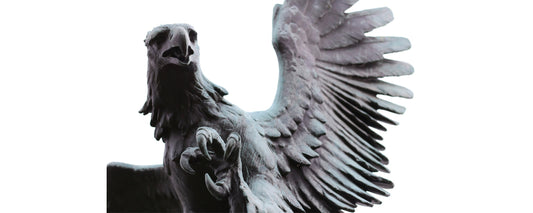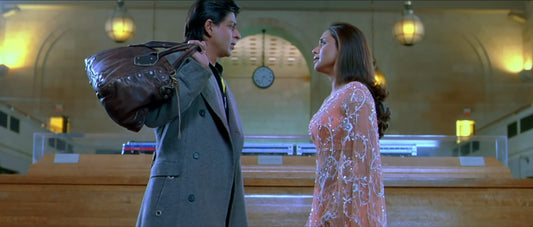Slow down and walk, and you never know what you might notice. But walk with a good tour guide, even a virtual one, and you’ll see a lot more.
With Walk New Haven as our guide, Daily Nutmeg editor Dan Mims and I set off on a windy Wednesday afternoon to learn more about Dixwell Avenue’s storied past. Four different city tours are on offer—Downtown, Downtown North, Wooster Square and Lower Dixwell—with interactive maps and numbered stops that link to historical blurbs and photographs. Walk New Haven is a product of the Ethnic Heritage Center at Southern Connecticut State University, the cooperative endeavor of five local cultural societies focusing on African American, Irish, Italian, Jewish and Ukrainian American culture with archives, a museum and a research center.
We parked in the island lot between Broadway and Whalley Avenue and set out on foot up Whalley to our first stop: St. Luke’s Episcopal Church, a 1905 brick structure with a beckoning red door. The building is on the National Register of Historic Places, but what’s more impressive is the congregation that worships inside, “one of the first churches in the country, and the third oldest Episcopal Church, with a predominantly African American congregation.” St. Luke’s counts Alexander DuBois, the grandfather of civil rights leader W.E.B. DuBois, among its 1844 founders.
sponsored by
Cutting through the church’s rear parking lot, we paused at the former Bethel African Methodist Episcopal Church, now Powerhouse Temple Ministry, before heading up to the intersection of Goffe and Sperry Streets, where the Prince Hall Grand Lodge of Masons occupies a building formerly known as the Goffe Street Special School, “perhaps the most notable monument to the history of Black people in New Haven.” Prohibited from attending public schools before 1871, some black children were educated in private homes. Many others weren’t schooled at all. The Goffe Street Special School opened in the mid-1860s and offered not only regular classes for those children but also an evening school and a nursery for the wider community.
As Dan lined up his camera for a shot, the door swung open, and Al Alston, secretary of the lodge, came outside to see what we were up to. He invited us in and took us around to the grassy side yard, where he pried up an inconspicuous metal cover to reveal a narrow, dark tunnel. Legend has it the tunnel reaches all the way to Varick Memorial African Methodist Episcopal Zion Church, which we’d be visiting soon, several blocks north on Dixwell Avenue. One story is that children used the tunnel to sneak over to school from the church. The fact that Varick—also on the walking tour—is believed to have been a stop on the Underground Railroad adds to the intrigue. The tunnel’s history (and actual length) remains unknown and isn’t part of the official tour. But you can stop in the lodge to check out its historic photos and artifacts, both in the main meeting area and in a small black history museum, open by appointment (203-787-3313) and sometimes on weekdays late in the afternoon.
We said goodbye to Alston and headed up Dixwell, where the tour took us to several more churches, a former police station, the site of the old Q House community center (slated for reconstruction “soon,” an official sign promises) and a number of buildings no longer in existence but pictured on the walking tour site: Odd Fellows Hall, Congregation Keser Israel, Lyric Theater.
sponsored by
One site that still exists is the Hannah Gray Home, a charmingly renovated green and gray Victorian-style house next door to another stop on the tour: Dixwell Avenue Congregational United Church of Christ, which dates back to 1820. The Home first opened in 1861 when black seamstress Hannah Gray died and left her abode as housing for “indigent elderly women of color in perpetuity,” its website says. Gray’s original wood frame house, pictured on the Walk New Haven site, was located farther south, at 172 Dixwell. A group of black women from several Dixwell churches revitalized the organization in the early 1900s and moved it to its present site, but financial problems at the end of the century forced its closure for 14 years. Nevertheless, the resilient organization was revived yet again. The house reopened in 2010 and currently serves 20 elderly residents.
Across the street, Varick Memorial Church, New Haven’s first black congregation, is about to celebrate its 200th anniversary. The church was organized in 1818, purchased its first permanent building in 1841 in the Hill and, after two more moves, landed in 1908 at Dixwell and Charles Street, where the church’s square brick bell tower still dominates the corner and serves as a neighborhood landmark. According to Walk New Haven, Booker T. Washington gave the final speech of his life at Varick in 1915.
We stepped inside the Varick Center next door, once the home of N. & B. Sosensky’s Hardware, a business started by a Russian Jewish immigrant that “thrived as a Dixwell institution from 1919 through the 1950s.” Here the Varick pastor’s assistant, Landris Jones, told us about the full slate of 200th anniversary events, which start today and include a play about the church’s history, a street corner renaming ceremony honoring church founder Bishop James Varick and a ticketed black tie gala.
Warmed by Jones’s hospitality and the building’s heat, we stepped back into the wind to conclude our Lower Dixwell tour with the spot that, for me, felt most alive with history: the Monterey Club. Opened in 1934 by Rufus Greenlee, a former vaudevillian, the Monterey became a popular restaurant and music venue that hosted jazz greats Duke Ellington, Billie Holiday, Charlie Parker, John Coltrane and others. Jazz organist Johnny “Hammond” Smith recorded his album Black Coffee live at the Monterey; Greenlee’s daughter Delores recently told WSHU, “‘One of the songs was named after me, thank you.’”
The Monterey is one of those places you could walk by without noticing. The cafe was refurbished by Greenlee and her sister, Virginia Wells, in 1988, but it closed for good back in 1991. Now a tattered For Rent sign hangs from the dilapidated facade. But stand across the street with a historic photo on your phone of Rufus Greenlee in tuxedo and top hat, holding the hand of his dance partner in a ruffled gown, then look up at the old jazz club with its chipped, southwestern red stucco and its curved windows of antique glass blocks. You can practically imagine its heyday back into existence.
Intrigued by the glass, Dan crossed the street with his camera. I stayed behind to look and imagine.
Photo Key:
1. Dixwell Avenue Congregational United Church of Christ.
2-3. St. Luke’s Episcopal Church.
4-5. Prince Hall Grand Lodge of Masons.
6. Future site of the new Q House.
7. The Hannah Gray Home.
8. Varick Memorial AME Zion Church.
9-10. Former site of the Monterey Club.
Walk New Haven Tours
www.walknewhaven.org
Written by Kathy Leonard Czepiel. Photographed by Dan Mims.









